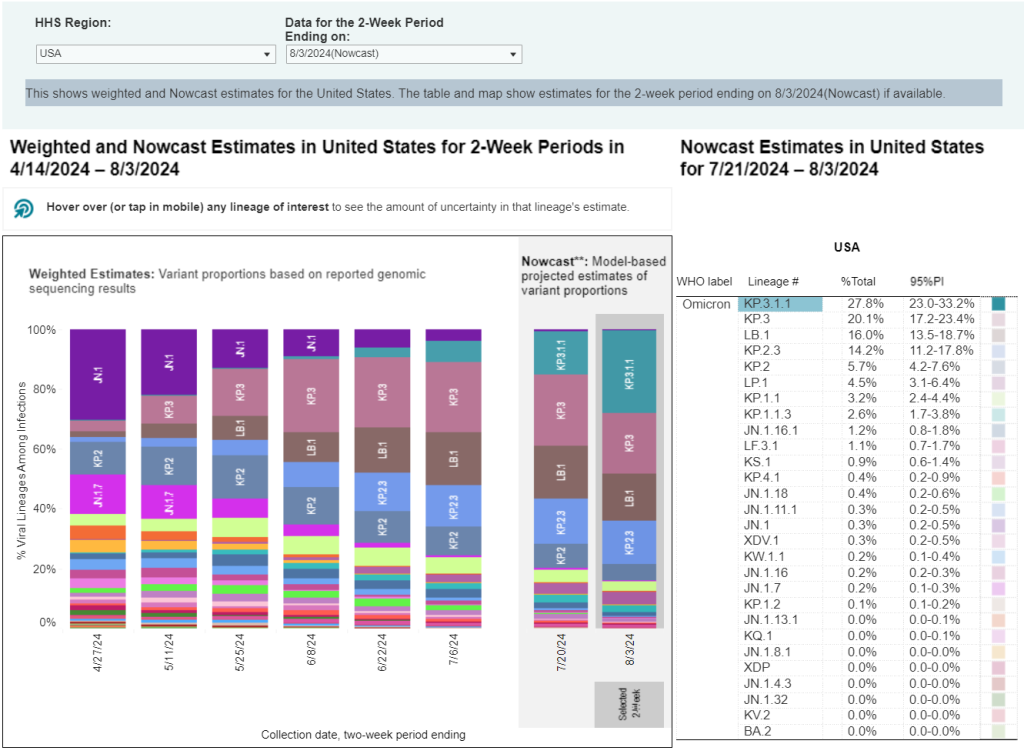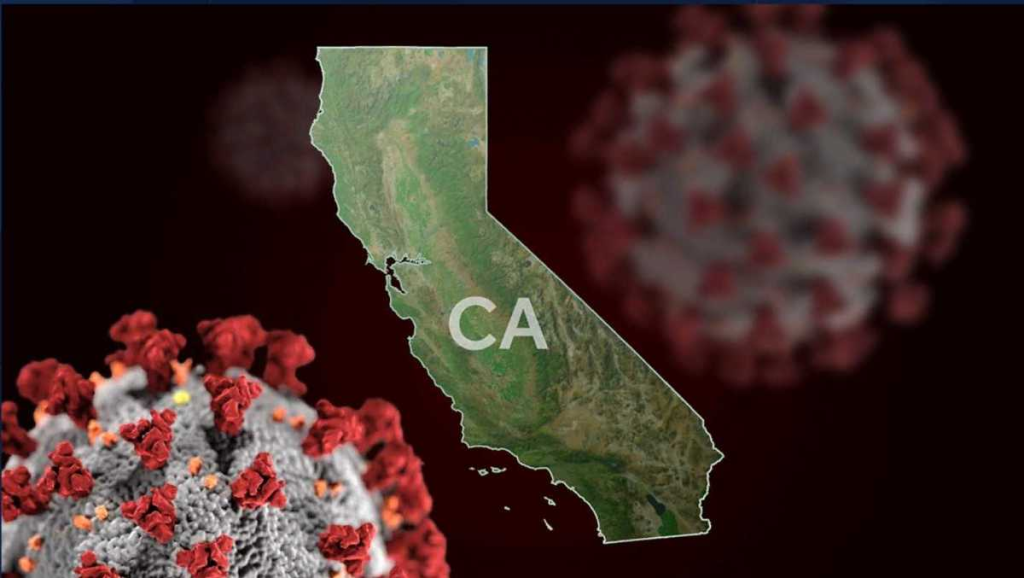The Relentless Summer COVID Surge in California
California’s summer COVID surge is attributed to the emergence of new variants and the extreme heat driving people indoors. According to Peter Chin-Hong, an infectious disease specialist at UCSF, this surge is “relentless,” marked by increased hospitalizations, emergency room visits, and test positivity rates since early May. The highly transmissible FLiRT variants are primarily responsible for this sustained increase in cases.
The Dominant KP.3.1.1 Variant
The now-dominant KP.3.1.1 variant has doubled in prevalence in the U.S., accounting for over 25% of cases, according to the CDC. Combined with its predecessor, KP.3, it makes up nearly half of COVID-19 cases nationwide. The FLiRT variants, named for their spike protein mutations, are approximately 20% more transmissible than previous strains, contributing to higher infection rates and prolonging the surge.

Symptoms of the New COVID Variants
The symptoms of the new COVID variants, including KP.3.1.1, are similar to previous strains but with some variations. Common symptoms include:
- Fever or chills
- Cough
- Shortness of breath
- Fatigue
- Muscle or body aches
- Headache
- Loss of taste or smell
- Sore throat
- Congestion or runny nose
- Nausea or vomiting
- Diarrhea
These symptoms can appear between 2 to 14 days after exposure. Those with significant time since their last shot or infection may experience more severe symptoms.
The Impact on California
California is among 19 U.S. states where wastewater virus levels are at a “very high” mark, accompanied by a steady rise in emergency room visits and an increase in test positivity to 13%. Eric Topol, director of the Scripps Research Translational Institute, noted that the current wave has surpassed four prior peaks of the pandemic, indicating the severity of the situation.
Challenges in Testing and Vaccination
The high rates of COVID-19 in California have led to difficulties in finding coronavirus tests at pharmacies and challenges for those looking to get vaccinated ahead of the updated fall shots. The CDC recommends that everyone ages six months and older receive the updated vaccine, expected to be available later in August or September.
COVID Treatment and Home Care
For those who test positive, COVID treatment at home includes isolating from others, especially vulnerable populations like the elderly, immunocompromised individuals, and pregnant women. Over-the-counter medications can help manage symptoms, and hydration and rest are crucial. In severe cases, antiviral treatments like Paxlovid may be prescribed.
Recommendations for Prevention
With the emergence of new variants, it is essential to stay updated on COVID-19 treatments and preventive measures. The CDC recommends the following:
- Vaccination: Everyone aged 6 months and older should receive the updated vaccine, expected to be available later in August or September. This is especially important for seniors and immunocompromised individuals.
- Testing: If you exhibit symptoms or believe you have been exposed to COVID-19, take a test. If positive, isolate yourself to prevent further spread.
- Masking: Wear masks in crowded indoor spaces to reduce transmission risk.
- Hygiene: Regularly wash your hands and use hand sanitizer.
The current Summer COVID surge in California, driven by the new KP.3.1.1 variant, poses a significant challenge. With symptoms similar to previous variants but higher transmissibility, it is crucial to remain vigilant. Following CDC guidelines on vaccination, testing, and preventive measures can help curb the spread and protect vulnerable populations.


